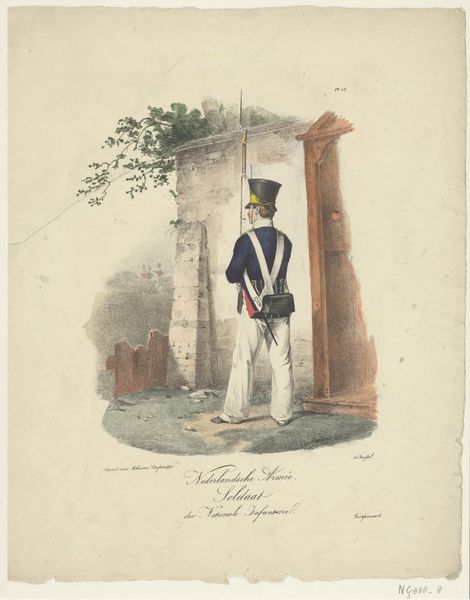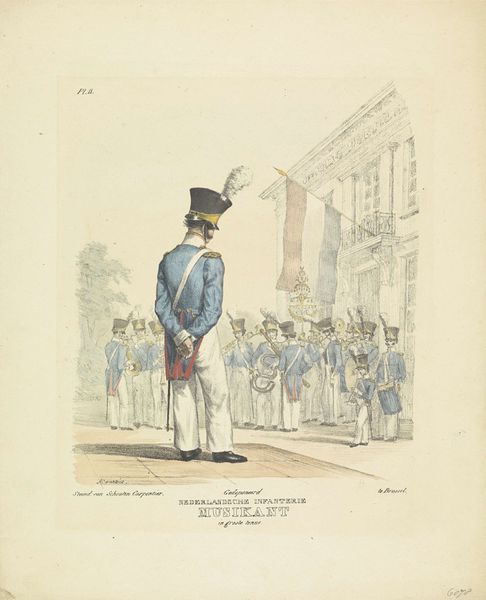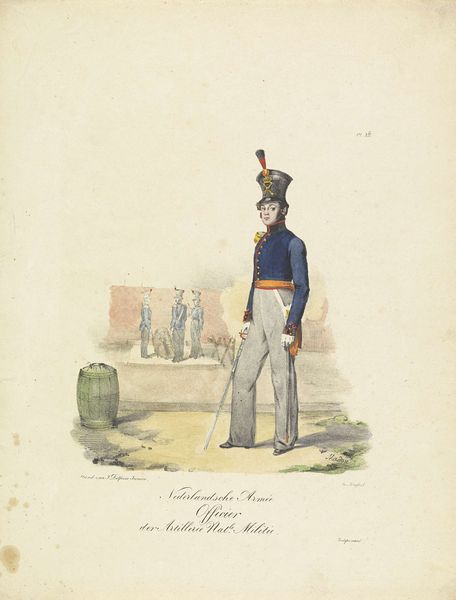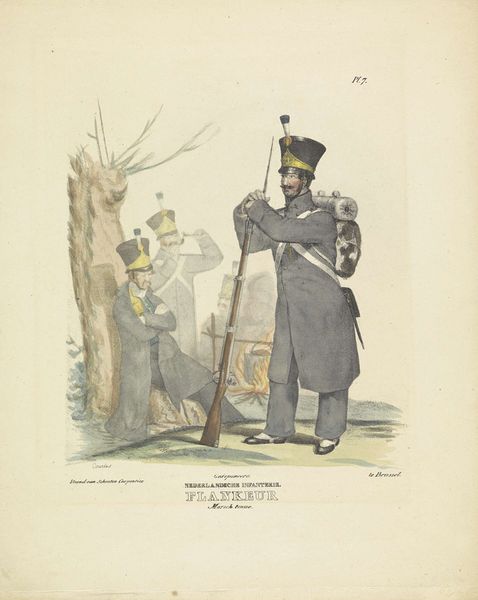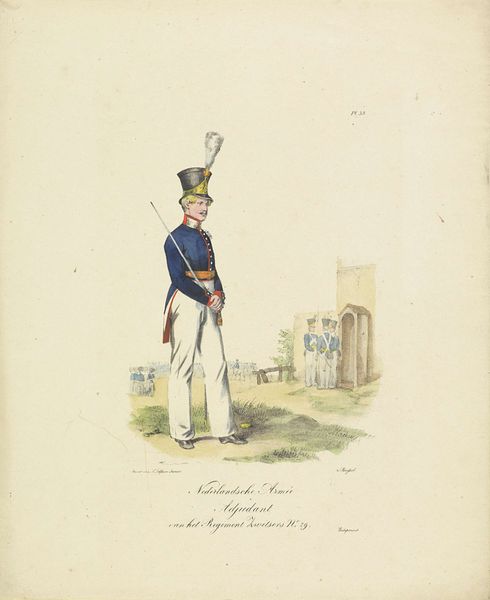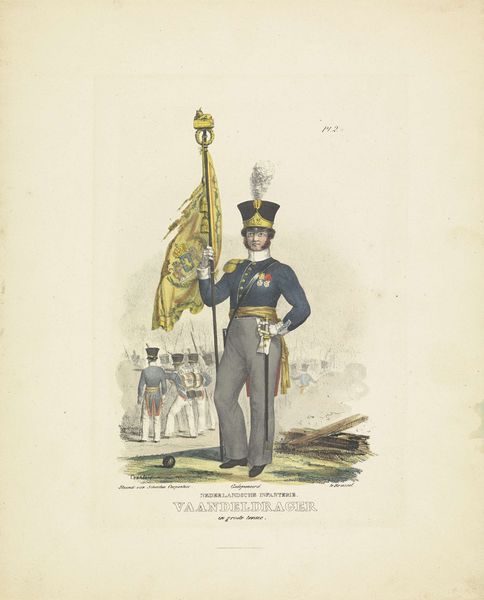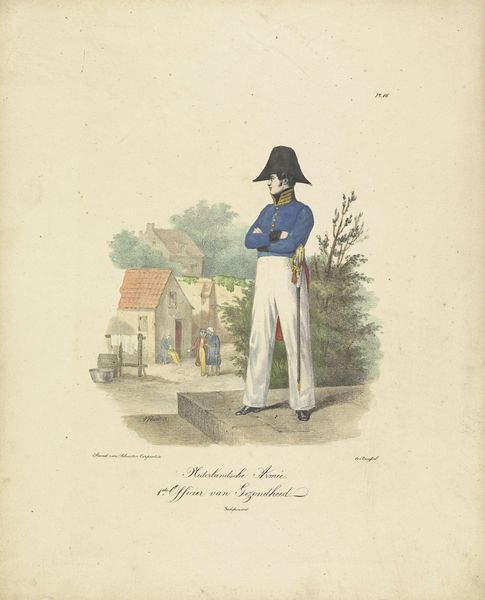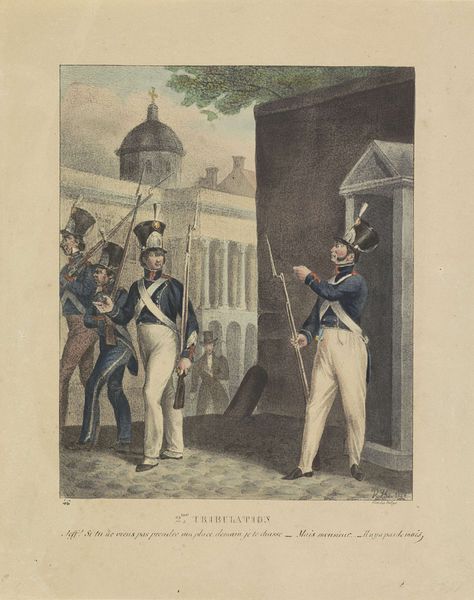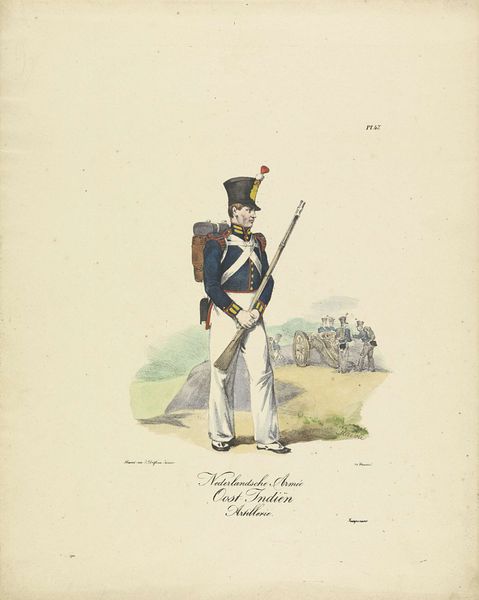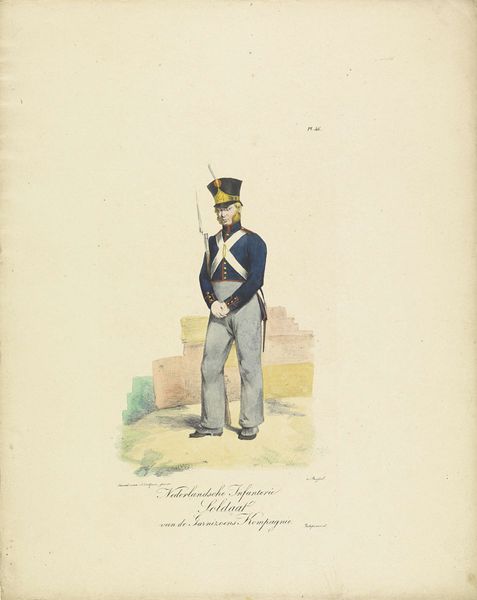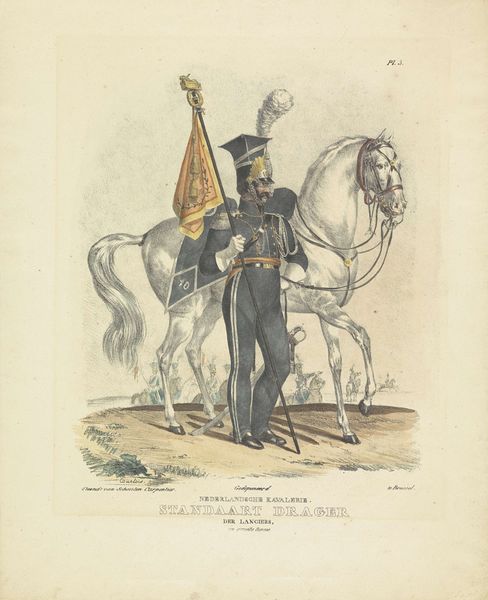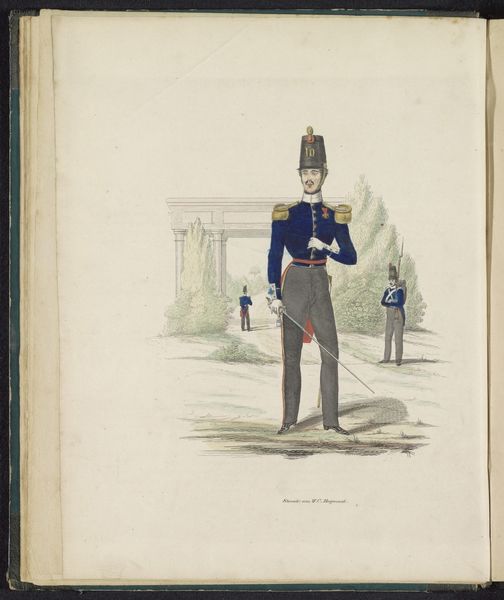
drawing, print, watercolor
#
portrait
#
drawing
# print
#
figuration
#
watercolor
#
romanticism
#
watercolour illustration
#
genre-painting
#
history-painting
#
academic-art
#
watercolor
#
realism
Dimensions: height 366 mm, width 298 mm
Copyright: Rijks Museum: Open Domain
Curator: The stillness in this image is captivating. Editor: Agreed. We are looking at "Soldaat in garnizoenstenue," or "Soldier in Garrison Dress," a watercolor and print attributed to A. Courtois, created circa 1825-1827. It presents a Dutch infantryman, standing guard. Curator: The way the watercolor is applied over the print…it almost softens the militaristic subject. Look at the grain of the paper, visible beneath the washes, adding a tangible quality to the figure. I wonder about the conditions in which Courtois produced these. Were they mass-produced, contributing to a broader visual culture around military life, or created for a more elite market? Editor: That’s a great question. These kinds of images circulated widely. This was a time of national self-fashioning in the Netherlands after the Napoleonic era. The military, then, would've been crucial for asserting that new identity and power, with prints such as this performing an important public function by visually disseminating and thus popularizing that image. Notice the dog included in the lower left. Its very inclusion offers a vision of social, quotidian history. Curator: You’re right. And focusing on the materiality, the uniform itself speaks volumes. The heavy wool, the construction…this wasn't just clothing; it was equipment, part of the soldier’s labor. The stark white straps and tall hat offer bold contrasts to the subdued greys and blues of his tunic and trousers, while adding structure and formality. It almost emphasizes the toll on the labor to create such an intricate structure. Editor: Indeed. And think about the viewers back then, seeing this image. It reinforces their idea of state authority, presenting a composed, steadfast defender. The architecture and neighboring figures frame the soldier into a kind of everyday scene and social order. Even the placement of the buildings against the human forms seem intentional in their layout of depth, direction, and form. Curator: It's fascinating how a seemingly simple portrait reveals so much about materials, making processes, and societal dynamics. Editor: Yes, art isn't created in a bubble. And understanding its history and role gives it all the more gravity, no?
Comments
No comments
Be the first to comment and join the conversation on the ultimate creative platform.
